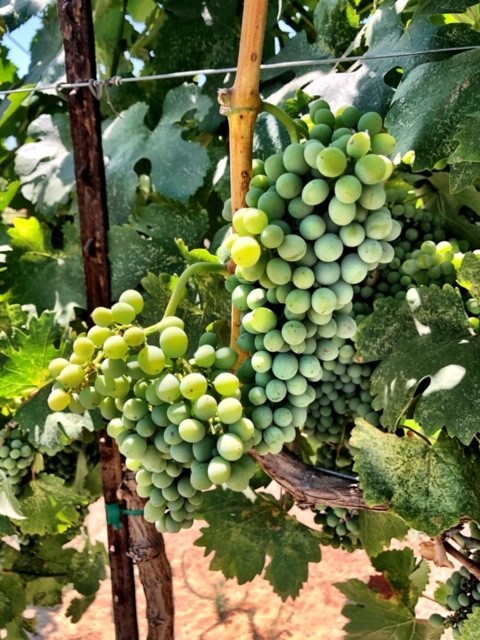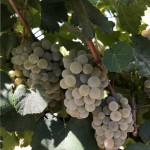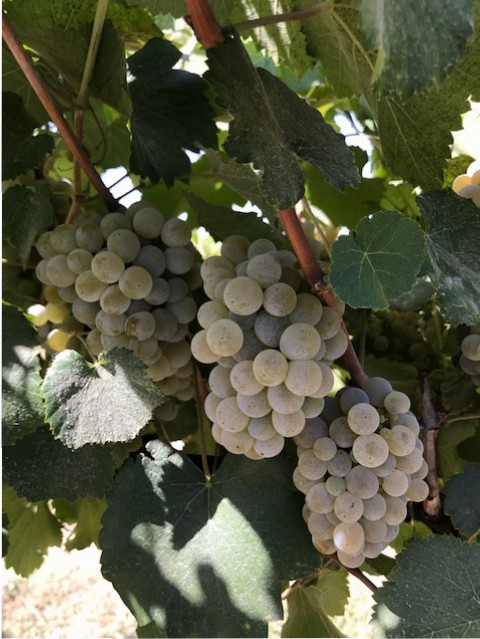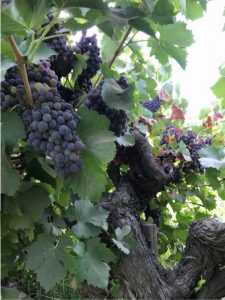Popular White Grapes for Home Winemakers

Ever consider making white wine at home but needed some advice on what grapes to use? Here’s the list of the most popular white wine grapes you’ve been looking for to help you get started.
Try these four white wine grapes:
Chardonnay
Sauvignon Blanc
Muscat
Riesling
Why these grapes? Here are some reasons for choosing these white grapes to try in your home winemaking cellar:
• Chardonnay – One of the world’s most popular grapes and ages for 5-10 years made in a wide range of styles from lean, sparkling to rich, creamy white wines aged in oak. It’s primary flavors include: yellow apple, pineapple, vanilla and butter with a taste profile that makes it a dry, medium bodied wine with medium acidity and 13.5–15% ABV
• Sauvignon Blanc – Loved for its “green” herbal flavors and racy acidity; ages 3-5 years and has primary flavors of gooseberry, honeydew, grapefruit, white peach and passion fruit and makes a dry medium to light bodied wine with high acidity and 11.5–13.5% ABV
• Muscat – This grape is available in many styles, from dry to sweet to still, sparkling, and fortified, ages 3-5 years with primary flavors including orange blossom, Meyer lemon, Mandarin orange, pear and honeysuckle that produces an off-dry light bodied white wine with medium to high acidity and under 10% ABV
• Riesling – An aromatic white variety that can produce white wines ranging in style from bone-dry to very sweet; ages over 10 years. Its primary flavors include lime, green apple, beeswax, jasmine and petroleum and produces an off-dry wine with a light body, with high acidity and under 10% ABV
Which white wine grape will you try this season? We’d love to hear your experience with these popular grapes.
Email sales@juicegrape.com or call 877-812-1137 to order or discus making wine from home!
Sources
Written by Michelle Griffis aka the Nutmeg Nose from MWG
Baklava and Wine Pairing
Who doesn’t love a good piece of baklava with a nice wine pairing?
What’s that? You’ve never eaten baklava while drinking wine? Looks like you’re in for a treat! (Literally.)
Especially around this time of year when we get to enjoy so much delicious cooking, a sweet, honey-laden piece of baklava is arguably the perfect way to conclude a meal.
Interested in making your own? While there are a million ways to make it, this is one of the most straight forward recipes to follow. You can always mix and match with other recipes as well. For example, some Turkish recipes call for including pistachios, and some Greek recipes include finely ground almonds to be included within the walnut mixture to aid in binding the nut mixture together (it works like a charm)!
Because baklava is so sweet and has an intense honey flavor, try finding a wine that will meet it at this point of heavy sweetness, but able to stand up to the dessert through cutting through with the wine’s natural acidity. This could be:
-
Sauternes from the Bordeaux region of France. This is one of the most important and famous sweet wine regions.
-
Ice wine. You can find producers from Germany, Austria, the northern USA and Canada who make wine in this interesting and unique method.
-
Muscat from Samos, Greece. These rich-hued orange-amber colored wines are like drinking a liquid form of baklava. Apple, pear, apricot, honey, and sweet spice flavors are to thank for this delicious wine.
Or go another route and choose a dry style wine if you don’t have a big enough sweet tooth for a sweet wine and a sweet dessert at the same time. These options could be:
-
Chardonnay. Whether you choose new world or old world Chardonnay for this pairing, make sure it’s been aged in oak, notably American oak (most commonly associated with new world Chardonnays). This added layer of associated creaminess will lend to smooth, approachable drinking with such a sweet after-dinner treat.
-
Champagne. The holidays are a time for celebrating and finally opening up that wine you’ve been saving. So pop open that bubbly and get partying!
Muscat: An ancient and beautiful grape variety
Fruity. Floral. Aromatic. Golden. Perfumey. Unique.
Meet Muscat.
What’s so great about this grape? With tons of variations and seemingly even more names, it’s known all over the world for producing an absolutely delicious wine.
It can be made dry, sweet, or even fizzy. With its beautiful floral aromatics (think orange blossom, white flower, honeysuckle) you’re bound to make a wine that impresses!
Muscat Winemaking Recipe
- Crush/destem and press your Muscat into your fermentation vessel
- Add potassium metabisulfite to kill off any native yeast present on the grapes
- Let sit for 12 hours.
- Add Cinn Free and stir well.
- Add Booster Blanc and Opti-White to the juice.
- When the juice reaches about 65 degrees, pitch your yeast. QA23, Vin13 and Alchemy I are good options for keeping the aroma in this wine alive and bright.
- When you see the Brix drop by 2-3, add Fermaid O and mix well.
- Check Brix daily – when Brix drops by 1/3 of the starting number, add Fermaid K
- Rack off gross lees when alcoholic fermentation is complete and add potassium metabisulfite
Helpful tips:
- Don’t lose out on Muscat’s incredible aromatics by exposing it to excessive oxygen. Be sure that as soon as alcoholic fermentation has completed that it’s not sitting out without an airlock.
- Focus on yeasts with the most aromatic potential
- Since this is low acid grape, you’ll want to retain any acidity or semblance of freshness present within the finished wine. Do this by preventing malolactic fermentation from occurring (which can drop the acid) by being sure to add potassium metabisulfite as soon as fermentation ends.
- Consider sweetening your muscat if you’re looking to try making a wine style different than fermenting to dryness.













Recent Comments